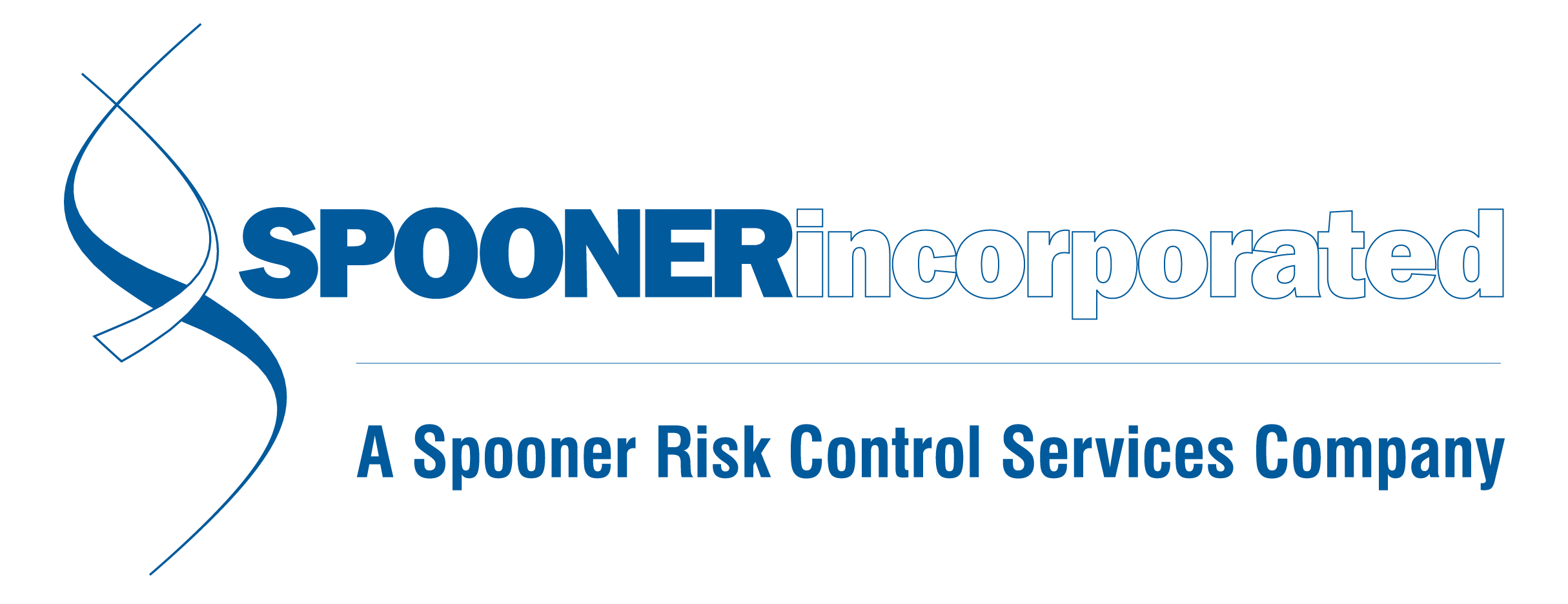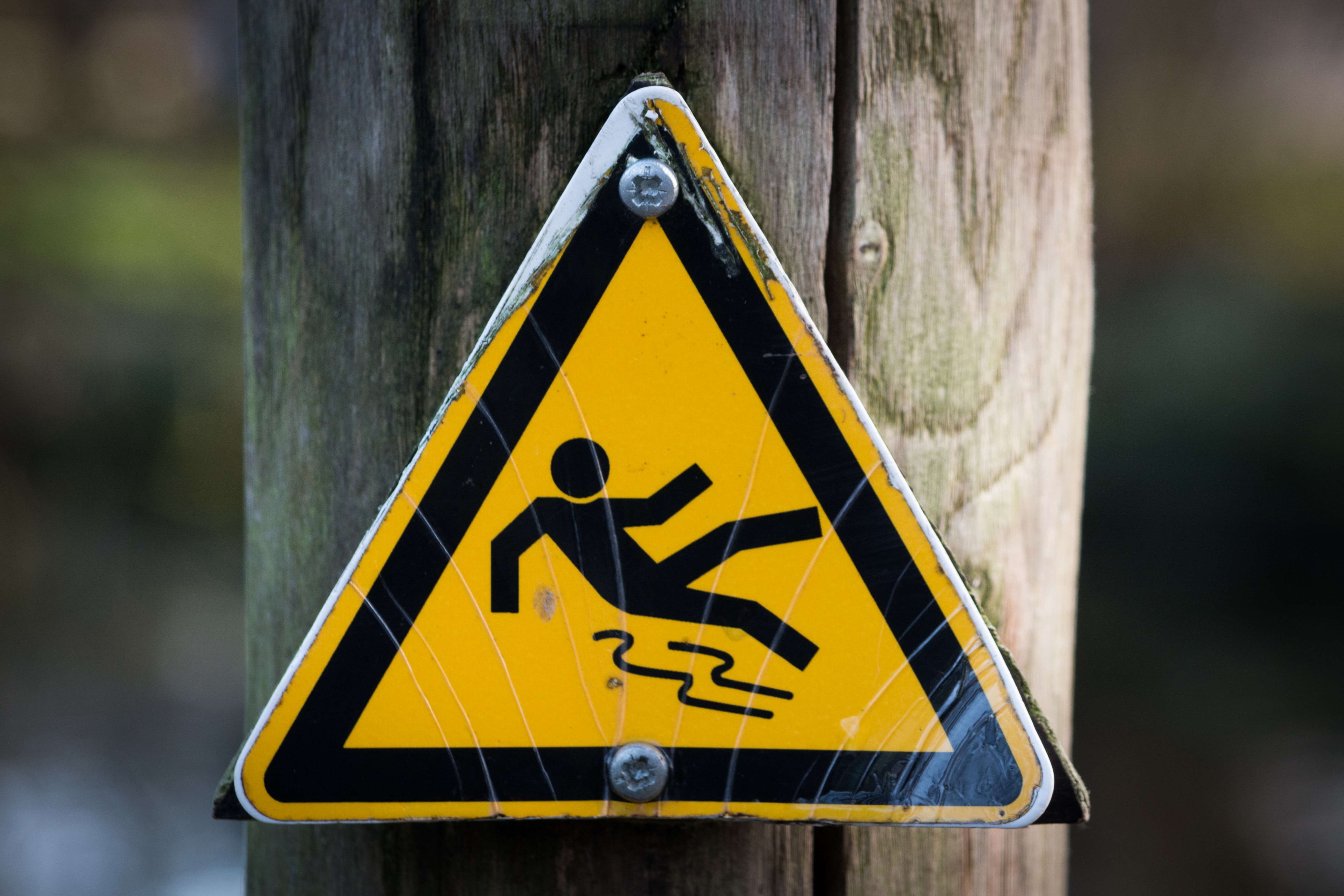Posted By Brandy King
February 22, 2024
Category: Osha, Safety, Osha Citation, Osha Inspection, Osha Investigation,
Some of the calls and emails we receive from Spooner clients may be preventive and simple, others can be panicked, and everything in between. One of the things that sets Spooner apart is that we don’t just have a safety services team – we encourage our clients to take advantage of those services. We offer a 24/7 OSHA-Safety hotline to all of our clients, we can assist them in OSHA informal conferences, and we advise them to call us right away when OSHA is involved (or will be). The knee-jerk reaction for many people is to just start talking when OSHA shows up, announced or not. We’d recommend contacting us and/or your attorney before doing anything else. If you don’t have an attorney that is well-versed on labor and employment law, we can connect you with one. This isn’t something for your tax or real estate attorney to handle. There’s no need to make any admissions of guilt during the inspection. The importance of understanding the OSHA process and your rights before they come knocking can’t be overstated. Every inspector will present differently, but they’re always trying to get information – that’s their job. Regardless of what they find during the inspection, there’s a good chance the employer may have recourse in negotiating a settlement better than the “as written” citation.
It’s not unusual for our safety team to assist clients in getting a case dismissed before it even reaches
Posted By Brandy King
January 17, 2024
Category: OSHA, Electronic Recordkeeping, Form 301, Form 300, OSHA 300A, Safety, Incident Reporting, Compliance
It’s time to post and electronically submit your OSHA logs - and this year, submission requirements will impact far more U.S. employers. We discussed this in detail when the rule was finalized in July 2023. Effective January 1, 2024, OSHA will require employers with over 100 employees in certain high hazard industries to complete electronic records submissions of Forms 300 and 301, in addition to Form 300A. These are records that covered employers should already be keeping, but previously have not been required to submit. The impacted industries include (but aren’t limited to) retail, wholesale, performing arts, manufacturing, farming, and grocers. Our safety team agrees that the fastest, easiest way to find out your company’s submission requirements is to use this ITA Coverage Application. Enter your company’s NAICS code and employee count, and it will confirm which logs should be submitted. As a general guide:
20-249 employees and on this list must submit 300A
100 or more employees and on this list must submit the 300A, 301 and 300 log.
Employee count is “per establishment,” not entire corporation size. So, what is OSHA’s definition of an “establishment?”
An establishment is a single physical location where business is conducted, or where services or industrial operations are performed. For activities where employees do not work at a single physical location - such as construction, transportation, communication
Posted By Brandy King
November 27, 2023
Category: NLRB, NLRA, OSHA, Compliance, Regulatory Agencies, Safety
The National Labor Relations Board (NLRB) announced on October 31, 2023 that they’ll be strengthening their partnership with OSHA on referrals, sharing information, training, and outreach. The Memorandum of Understanding allows OSHA and NLRB to work together more efficiently to enforce labor laws and protect the rights of workers.
Assistant Secretary for OSHA Doug Parker stated, "Everyone should be able to exercise their legal rights in the workplace without fear of losing their job or other forms of punishment.” He noted that the partnership will expand the capacity of both agencies to protect workers raising concerns about workplace violations or retaliatory activity.
This arrangement is likely to increase overall understanding of workers’ rights under federal anti-retaliation and whistleblower protection laws. The two organizations have built a fact sheet to help workers understand their rights and what recourse they have and what recourse they have if those rights are infringed upon. You can find that fact sheet here.
It shouldn’t be news to employers that you can’t (and shouldn’t) retaliate against employees for exercising their rights when it comes to workplace safety. If you don’t already have this poster alongside all of your other required communications to employees, you can order one for free here. We’re sharing the news of this partnership because it stands to amplify the already aggressive stan
Posted By Brandy King
March 27, 2023
Category: Ohio Bwc, Workers' Comp, Safety, Catastrophic Claim, Public Relations, Osha
We’ve been collecting testimonials from a few clients lately, and one of them spoke about how our safety team responded to a stressful situation in a way that gave him a lot less to worry about.
HR Associates Personnel Service in Piqua, Ohio began working with Spooner as their TPA over ten years ago. Soon after our partnership began, an employee tragically suffered a heart attack while driving a forklift - and right away, Spooner sprang into action. We provided an investigation, followed by a comprehensive study with photos of the worksite. Steve Risner, Vice President of HR Associates, told us that “having piece-of-mind on that day spoke volumes about the integrity of Spooner’s team.”
When catastrophic events happen in the workplace, management shifts into high gear to respond. Incidents like amputations, forklift accidents, fatalities, and personal illnesses that manifest at work are examples of catastrophic events that could lead to OSHA and VSSR issues. Spooner’s safety professionals can support your management team in these crisis situations by conducting thorough incident investigations to identify the root cause, and creating plans for preventive actions going forward. Catastrophic events require a swift and proactive response, so we urge you to contact us as soon as these events occur, so we can provide best
Posted By Brandy King
January 19, 2023
Category: OSHA, Safety, Slips Trips Falls, Workplace Injury, Walking Working Surfaces, Soft Tissue Injury, Ohio Workers' Comp
Slips, trips, and falls continue to be a leading cause of emergency room visits for many workers in the state of Ohio, and nationwide. Some common slip, trip, and fall injuries include:
• Fractured Bones
• Lacerations
• Strains/Sprains
• Back injury
• Head injury/brain trauma
Causes of Slips, Trips, and Falls
Some common causes of these injuries include:
• Wet or oily surfaces
• Weather hazards including rain, snow, and ice
• Loose mats and rugs
• Walking surfaces that are not level
• Obstructed views
• Poor lighting
• Clutter
• Uncovered wires and cables
Preventing Slips, Trips, and Falls
There are several ways that employers can help prevent these types of incidents and keep worksites safer. The simplest way is to practice good housekeeping throughout your facility. Other options include wearing slip-resistant shoes, using caution when walking on uneven surfaces, as well as surfaces that may be slippery or wet.
Good Housekeeping Tips
Good workplace housekeeping is an easy way to prevent most slips, trips, and falls, and it’s often overlooked. Simply cleaning up your work area as you go can help on the job site. Examples of good housekeeping
Posted By Brandy King
December 08, 2022
Category: safety, ohio bwc, osha, safety grant, grant money, safety intervention, ergonomics
Ohio employers may be able to check one more thing off their wish list this year, without paying full price. Ohio BWC has reinstated the Safety Intervention Grant (SIG) Program, which matches eligible state-fund employers $3 to $1 on investments to create a safer workplace. Most employers who have had an Ohio BWC policy for at least one year, are paying above minimum premium ($120+), current on installments and true ups with no lapses this year should be able to take advantage. Self-insuring employers, employers in a self-insured PEO, state agencies and state universities are not eligible. Every three years, eligible employers can apply for up to $40,000 in matching funds to purchase “equipment to substantially reduce or eliminate injuries and illnesses associated with a particular task or operation.”
Prior to applying, you should plan to reach out to a BWC safety field consultant to assist with the application process. Be prepared to show them info on any workers’ comp claims or incidents associated with the particular area or task, the number of employees performing the task, and explore vendors to get price quotes on the equipment you have in mind. As always, there are items and services that grant funds can’t be used for - like standard PPE, training, equipment needed to meet minimum OSHA requirements, etc. A detailed moratorium can be found here.
Of course, there are always a few strings attached when money is being given away. There are some
Posted By Brandy King
October 13, 2022
Category: Safety, Safety Software, OSHA, Gap Analysis, Accident Reporting
Since Spooner is involved in the safety programs of several of our client employers, we encourage clients to find a method of tracking data that works for them. If we’re not learning from historical trends and using available data to prevent future incidents, then why record it all (aside from OSHA, of course)? When a decision maker at one of our clients moves on to a new opportunity, they often bring Spooner with them. Many of them go on a similar role elsewhere, but sometimes they move on to become innovators and create solutions that we think would be valuable to our clients.
The Spooner team had the pleasure of working with Valerie Morris as Vice President of Safety & Risk Management at both Aetna Integrated Services and Atalian Global Services. Following her time there, she worked with colleague Chris Bellamy to design a safety software that would meet all of the needs of safety professionals. The Building Effective Safety Teams (B.E.S.T.) ™ Program includes key elements like training capabilities, gap analysis, recordkeeping and customization options. Like most software intended for company-wide use, different administrator levels can be assigned to ensure sensitive data remains private.
The B.E.S.T. Program was designed to help build cultural change in the way safety is viewed within your organization. It allows team members at all levels to engage in risk management, and puts everyone on the same page in terms of expectations and safety culture.
Posted By Brandy King
April 20, 2022
Category: Osha, Mandate, Heat Illness, Heat Stroke, Safety, Inspections, NEP,
There’s no shortage of OSHA emphasis programs lately, and now they’re giving you another thing to worry about. Earlier this week, the Department of Labor announced that OSHA has launched a new National Emphasis Program (NEP) to protect workers from both indoor and outdoor heat hazards. They’ll be conducting heat-related workplace inspections to get ahead of avoidable injuries, illness – or in some cases, fatalities.
DoL Secretary Marty Walsh made the announcement at an event in Philadelphia on April 12, with the initiative already having been made effective on April 8. The plan is to encourage employers to take proactive steps to avoid illness and death for workers that are exposed to high heat conditions. The average number of deaths caused by heat-related illness has doubled since the 1990s. Employers who operate outdoors regularly are typically aware of these risks, but companies where most employees work indoors haven’t considered themselves at risk of answering to OSHA on this. Many large manufacturers are still operating with no air conditioning in their factories, and may only be providing bits and pieces of what employees need to stay safe in these stifling environments.
The program will involve OSHA inspecting indoor and outdoor employer sites across 70+ high-risk industries, specifically in areas where an official heat warning or advisory has been issued. If it’s 804° F or higher, inspectors and com
Posted By Brandy King
March 07, 2022
Category: Safety, Osha, Osha Inspections, Osha Sst, Informal Conference, Osha Abatement, Site Specific Targeting, Osha 300a, Recordkeeping, Investigations, Safety Services
The Site-Specific Targeting (SST) plan is OSHA’s main site-specific programmed inspection initiative for non-construction workplaces that have 20 or more employees. OSHA will generate inspection lists based on elevated Days Away, Restricted, or Transferred (DART) rates for 2019, and sites with upward trending rates for the three-year range of 2017-2019. They will also identify a random sample of establishments that did not provide them the required 2017, 2018, and 2019 Form 300A data. To verify data accuracy and quality control, OSHA also intends to include a random sample of low-rate establishments from the 2019 data.
1. High-Rate Establishments
The SST plan selects individual establishments for inspection based on 2019 Form 300A data. Since average DART rates vary widely among industries, OSHA will set one DART rate for manufacturing and a different DART rate for non-manufacturing as objective selection criteria.
2. Upward Trending Establishments
OSHA will identify establishments with rates above their industry’s national average in 2017 that have continued to trend upward in both 2018 and 2019 and continue to remain above their industry’s national average.
3. Low-Rate Establishments
To verify the reliability of the Form 300A data reported to OSHA, the agency will generate a random sample of establishments with low DART rates using the 2019
Posted By Brandy King
March 07, 2022
Category: Spooner Safety Seminars, Safety, Safety Training, Osha, BWC Training, HR CE, HR Continuing Education, Training Credits, Recordkeeping
ATTENTION Group and Group Retro Clients: Spooner Safety Seminars are back on the road! Following a lengthy hiatus, our team is eager to get back on the road educating employers and helping you fulfill your required training credits with BWC. See below to find out when our team will be in your area and get signed up before the March 29 registration deadline.
Cleveland Area: April 5th 2022, 10 AM – 12 PM @ Holiday Inn, 6001 Rockside Rd, Independence, OH 44131 ***This session has reached capacity. If you need help locating another 2 hour session in your region, please reach out to our safety team!***
Dayton/Cincinnati Area: April 6th 2022, 10 AM – 12 PM @ Hilton Garden Inn South-Austin Landing, 12000 Innovation Dr, Miamisburg, OH 45342
Columbus Area: April 6th 2022, 3 PM – 5 PM @ Embassy Suites, 5100 Upper Metro Place, Dublin, OH 43017
Youngstown Area: April 7th 2022, 10 AM – 12 PM @ A La Cart Catering, 429 Lisbon St, Canfield, OH 44406
To register online, click here.
NOTE: Registration deadline is Tues 3/29/22, 11:59 PM
All employers are welcome to attend these informative workplace safety seminars. The training sessions will satisfy BWC’s 2-hour safety training requirement for companies in Group Rating or Group Retrospective Rating for the 2021 policy year, and are approved for continuing education credits for those with HR credentials.
The attendance fee is $35.00/person – this will be invoiced after your attenda
Posted By Brandy King
January 21, 2022
Category: Safety, OSHA, First Aid, CPR, AED, Life Saving Skills, Workplace Safety,
The skills we teach our employees rarely have much cross-over or impact in our personal lives. One skill you can arm your workers with that will be valuable from every angle is the ability to help save someone’s life.
Heart disease is the leading cause of death in the U.S., claiming over half a million lives each year. 88% of those deaths occur when someone suffers from cardiac arrest outside of a hospital, because most bystanders don’t have any CPR knowledge. Everyone knows to call 911, but a lot can happen before paramedics arrive. Brain death begins 4-6 minutes after the heart stops “breathing.” CPR helps keep blood flowing to vital organs and lowers the chances of permanent damage. If CPR is started within the first two minutes of a cardiac event, that person’s chances of survival double.
Training your employees in first aid is also incredibly valuable both inside and outside of work. Having the knowledge to treat everyday injuries like burns and lacerations, spotting concussions, and stopping a bleed could save a life or prevent serious, lifelong damage.
Employees are statistically more likely to utilize these skills outside of work, but arming them with the knowledge to help in any arena is invaluable. Protect yo
Posted By Brandy King
January 21, 2022
Category: Safety, Winter Safety, Winter Weather, Cold, Cold Safety, OSHA, Recordables, Frostbite, Hypothermia, Slips Falls, Ice Injury, Ohio BWC, Workers' Compensation
Employers often assume that employees understand the basics of winter weather safety, until they witness a staff member go full "Flinstone" in the parking lot at the first sign of ice. The truth is, common sense isn’t as common as one might think, and a refresher is helpful for everyone. The Bureau of Labor Statistics (BLS) reports that more than 20,000 cold weather-related workplace injuries occurred in 2019, which is quite a reduction from 2014’s 40,000+. Many of these injuries occur in places that should be used to operating in severe winter weather (we’re looking at you, Ohio and Michigan). The majority are sustained from “same level falls,” meaning falls on the walking surface, not involving any heights or falling through another surface. Simply put, these can be very expensive claims, due to the nature of and treatments for musculoskeletal injuries. We know the most inexpensive claim is the one that never happens - so let’s talk about how to avoid some of the dangers brought about by the season.
1. Clear and treat (salt) any walking surface that employees are expected or required to pass. This includes parking lots, sidewalks, ramps, stairs, etc.
2. Monitor indoor walking surfaces for slippery areas where snowy shoes have been, cle
Posted By Brandy King
January 21, 2022
Category: OSHA, OSHA ETS, Vaccine Mandate, COVID 19, Compliance, Federal Contractors, HR, Safety
OSHA announced on January 26 that they plan to withdraw the ETS, but that the rule would still be proposed as a permanent requirement. This comes just weeks after the Supreme Court reinstituted a stay of the OSHA’s Emergency Temporary Standard (ETS) earlier this month, requiring large employers to require staff to be vaccinated or produce a weekly negative test.
In their January 13th decision, the Supreme Court maintained that while COVID-19 exists as a risk in most workplaces, they do not view it as a strictly occupational hazard. The majority opinion states that targeted regulations may be permissible - citing workplaces that are particularly crowded or cramped, or laboratories that work directly with the virus for research purposes. In a separate opinion on January 13, the high court did allow CMS (Center for Medicare & Medicaid Services) to require COVID-19 vaccinations for employees of healthcare facilities receiving federal funds from Medicare & Medicaid.
OSHA initially published the ETS on November 5. A flurry of legal action followed from both private and public employers, and by November 12 - the 5th Circuit Court of Appeals issued a stay of the ETS (making the ETS invalid). To further complicate matters, the 6th Circuit voted 2-1 to reinstate the mandate on December 17.
Some employers are choosing to create their own vaccine mandates, which should be handled carefully to avoid discrimination. If you have questio
Posted By Brandy King
January 21, 2022
Category: OSHA, OSHA 300A, OSHA Injury Reporting, OSHA ITA, OSHA Compliance, Safety, Injury Reporting, Recordable, Reportable, Workplace Safety, DOL
It’s time for employers to submit and post their OSHA 300A. Here are some pointers to guide you through the process. More resources can be found on OSHA.gov.
Electronic Submission:
Go to https://www.osha.gov/injuryreporting/
Click the red “Launch injury tracking application” button on right and follow the instructions
Details:
Who - Establishments with 250 or more employees that are currently required to keep OSHA injury and illness records, and establishments with 20-249 employees that are classified in certain industries with historically high rates of occupational injuries and/or illnesses. Visit the OSHA website for list of “certain industries”.
What - Covered establishments must electronically submit information from their OSHA Form 300A.
When - In 2022, covered establishments must submit information from their completed 2021 Form 300A by March 2.
How – OSHA provides a secure website that offers three options for data submission. First, users can manually enter data into a web form. Second, users can upload a CSV file to process multiple establishments at the same time. Last, users of automated recordkeeping systems will have the ability to transmit data electronically via an API (application programming interface).
View the CSV instructions
Download a CSV file template
Download a CSV sample file
View the API technical
Posted By Brandy King
January 21, 2022
Category: Osha, Safety, Osha Inspections, Workplace Safety, Abatement, Informal Conference, OSHA Settlement Negotiations,
The advertisement on the front page of OSHA.gov says a lot: “OSHA is Hiring! Apply Now.” Workplace safety enforcement has added significant manpower and has been much more active than in previous years. Inspections have increased in number, as well as in breadth and depth, which is why it’s a great time to give your company a safety tune-up.
There have been plenty of distractions in 2021, which may have led to a reduction in attention to detail with required compliance programs. Pair that with the new administration's aggressive OSHA stance, and your company should have a renewed desire to review their OSHA Compliance. This should include all of your written programs, as well as sub-elements under those programs.
When is the last time you have updated your health and safety written programs?
When is the last time you checked to ensure all of your training is up to date and documented?
When is the last time you completed a safety walk-through of your facility, with corrective action taken for any identified discrepancies?
What are your compliance weaknesses (or maybe you’re not even sure)?
What are the underlying safety deficiencies contributing to your workplace injuries, leaving you vulnerable to OSHA penalties, and what are you doing to correct those issues?
These are the types of questions that our Spooner Safety team can help you answer, and get you on the right track
Posted By Brandy King
October 07, 2021
Category: OSHA, First Aid, CPR, AED, Medical Treatment, First Responder Training, Safety Training, Safety, Compliance
One question that our safety team gets across nearly all industries is, “Am I required to have my employees certified to perform first aid and CPR?”
OSHA requires that in the absence of an infirmary, clinic, or hospital within near proximity to the workplace – one or more staff members should be adequately trained to provide first aid. While the standards do not specify exactly how close by, OSHA has long interpreted the term "near proximity" to mean that emergency care must be available within no more than 3-4 minutes from the workplace.
One option these standards provide employers is to ensure that a member of the workforce has been trained in first aid. This option is a feasible and low-cost way to protect employees, as well as putting the employer clearly in compliance with the standards. OSHA recommends that every workplace include one or more employees who are trained and certified in first aid, including CPR. While AED training is not specifically addressed or required by the standard, including that in your CPR training is recommended.
The team at Spooner Safety will now be offering first aid and CPR training to businesses that would like to certify members of their team as either a requirement or best practice. Please contact Jeremy Smith at 440-249-5696 | Ext: 154 for more
Posted By Brandy King
October 04, 2021
Category: OSHA, OSHA ETS, Vaccine Mandate, COVID 19, Compliance, Federal Contractors, HR, Safety
Last month, President Biden directed OSHA to issue an Emergency Temporary Standard (ETS) that requires private employers with 100+ employees to ensure all employees are either vaccinated against the COVID-19 virus or are able to produce a negative test each week. Employers (of any size) that are federal contractors or receive certain federal funding will also be expected to meet the employee vaccination requirements – without the option of a “test out.” We expect OSHA to issue an ETS in the near future, which will hopefully answer some of the questions surrounding this mandate.
Until this summer’s COVID-related ETS for healthcare workers, OSHA had not successfully issued an Emergency Temporary Standard since the 1980s (pertaining to asbestos). Effective July 2021, the agency issued its first ETS in decades highlighting the need for healthcare employers to provide certain protection measures against COVID-19 for employees. By design, an ETS will remain in effect until a permanent rule is issued.
Many details of how this is all expected to work have yet to be disclosed, which makes it very difficult for our team to provide the best possible guidance. In the meantime, we can direct you to the most helpful reference we’ve found thus far, which is an article published by the National Law Review. We encourage you to stay tuned to our blog, LinkedIn page and your outside counsel – things are changing rapidly and we’ll do our very bes
Posted By Brandy King
August 02, 2021
Category: OSHA, OSHA Region 5, Indiana, Ohio, Michigan, Safety, Hearing Conservation, Audiogram, Regional Enforcement Program, PPE
OSHA’s Region 5, which includes Ohio, Michigan, and Indiana, issued a press release announcing a Regional Emphasis Program (REP) for Exposure to Noise Hazards in the Workplace. The goal of the REP is to encourage employers to take steps to identify, reduce, and eliminate hazards associated with exposure to high levels of noise. Prior to the initiation of enforcement, a three-month period of education and compliance assistance to the public will be conducted to support the efforts of the Agency in meeting the goals of the REP. Enforcement related to this REP will begin on September 01, 2021.
By law, OSHA requires employers to implement a hearing conservation program when the average noise exposure over eight working hours reaches or exceeds 85 decibels, which the Centers for Disease Control compares to the sound of city traffic (from inside the vehicle) or a gas-powered leaf blower.
Nearly one in 10 people endures noise levels at work loud enough to cause hearing loss while seven in 10 experience moderately loud noise levels. A Bureau of Labor Statistics Survey published in 2019 found that more than half of the nation’s manufacturing workers reported not using personal protective equipment (PPE) to protect their hearing.
If you have concerns regarding noise levels in your facilities, reach out to Spooner’s Safety team at
Posted By Brandy King
June 11, 2021
Category: PEO, Professional Employer Organization, Workers Compensation, Ohio BWC, Pros And Cons Of PEOs, Payroll, HR, Safety, Outsourcing, FMLA, Unemployment, Benefits
When we talk to prospects about Surety HR, our self-insured PEO (professional employer organization), we get a lot of very different reactions - confusion, curiosity, blank stares and occasionally – a crossed-arm refusal to hear anything else about it. We knew when we began building our PEO that several employers have a bad taste in their mouth about PEOs, usually after having (or hearing about) a bad experience. That’s one of the many reasons we sought out these opinions to help build our framework based on what employers feel does or does not work.
The biggest thing we want to make clear is that we are not our competition. We don’t charge based on a percentage of payroll, baking everything together so that you’ll never really know how much you’re paying for any of our services. When employers are looking for some of the solutions a PEO can provide, they are not always looking to move all their employment-related needs under one umbrella. This is why larger, mature, and sophisticated companies have avoided entering into a PEO relationship. Surety HR is a sister company of Spooner Incorporated – an unrivaled TPA and consulting firm with less than 2% client turnover. Because of this foundation, our focus is more on lowering workers’ comp premiums instead of bundling services that you may not need or want. It also means if and when you decide it’s time to exit the PEO, the process will b
Posted By Brandy King
June 09, 2021
Category: OSHA, OSHA Inspections, Surprise Inspection, Opening Conference, Informal Conference, OSHA Compliance, Safety, LO/TO, OSHA 300, Recordkeeping
Under the new administration, we have already seen a significant difference in approaches compared to the previous ones. Here is a recent example:
An employee gets his arm caught in a machine and is hospitalized. Historically, in addition to the standard 5 years of OSHA 300/300A - OSHA would be looking at the machine and requesting the Lock Out/Tag Out (LO/TO) program. Now when OSHA shows up, it may look more like this: They look at the machine, request LO/TO and their written HazCom GHS program, Employee Orientation (onboarding) program, all LO/TO training documentation for Authorized and Affected employees, PPE Hazard Assessments, work instruction/training on machine in question, and Forklift Training Documentation.
Is all of this requested material directly related to the incident? Not exactly - but they're going to expect you to supply it, regardless. Having said that, Spooner is encouraging all of our clients to review their OSHA Compliance, which should include all your written programs, sub-elements under those programs, and your facility. If you think you have nothing to worry about, ask yourself this: Once OSHA is in our facility, could we supply all of that requested documentation?
Speaking of having OSHA at the door, we get a lot questions (and panicked phone calls) on that subject. To help you navigate that anxiety-inducing situation, here are some basic steps to take if you receive a “surprise” vis









